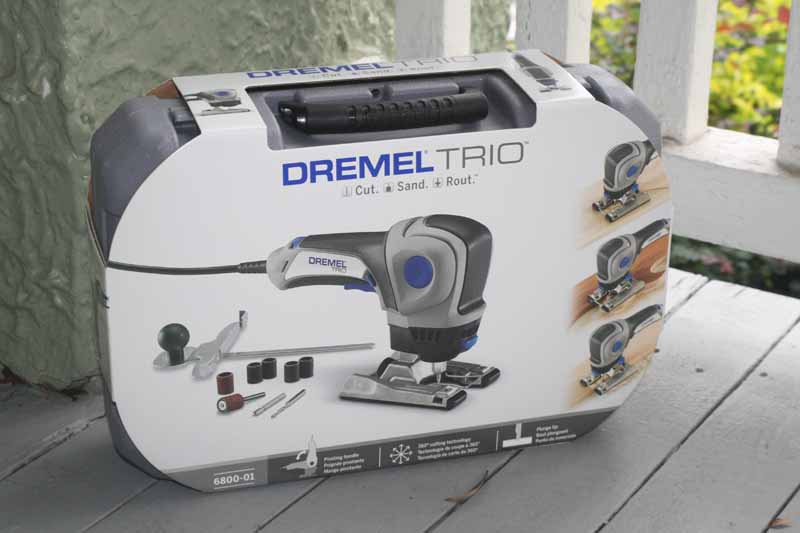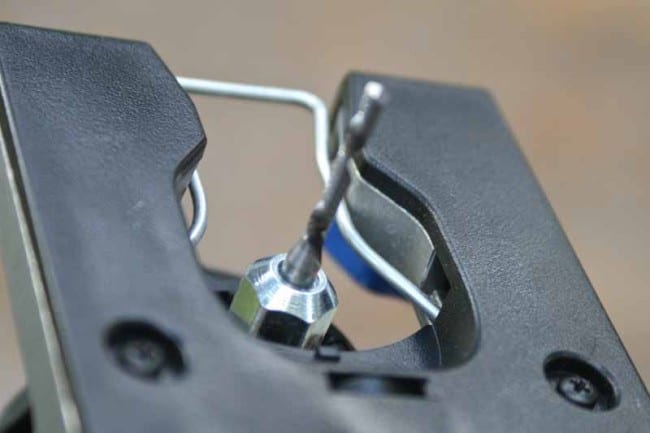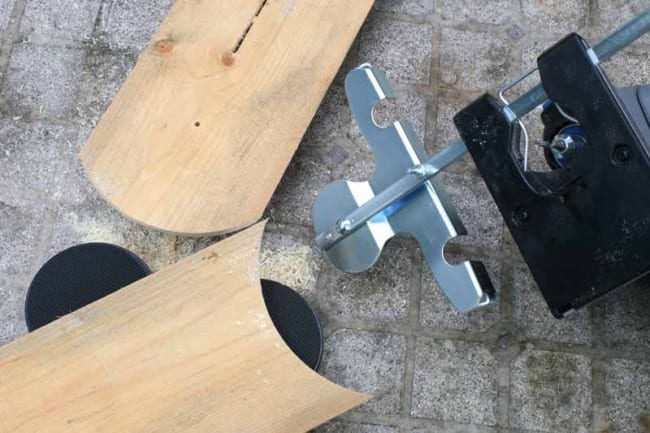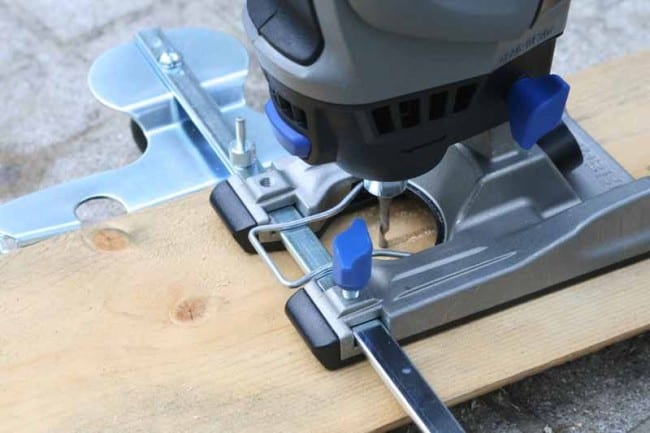At this point we’d have to say that there is no reason not to have a few Dremel tools around the shop. The Trio is yet another product that is simply easy to use and handy for a variety of tasks, from sanding to cutting to routing. The trick with the Dremel Trio 6800 is understanding its target market. This isn’t a professional’s tool – simply because it’s flexibility precludes it from being the very best at anything that it does – but it IS extremely flexible and provides a value that is almost unheard of and unseen in the marketplace. Like the Dremel Multi-Max Oscillating multi-tool and the Dremel Cordless Multi-Max before it, this is one of those tools that makes a great gift for any DIY or enthusiast.
For years Dremel has restricted itself to the rotary tool, but they now seem to be expanding their horizons. With the introduction of the Multi-Max last year and now the three-in-one sanding, cutting, and routing Trio, Dremel is reaching out while still staying true to its roots. And since those roots are so strong, and well-placed in the giant home improvement warehouses and retail stores, Dremel is in an excellent position to broaden their horizons.
The Dremel Trio is designed with multiple applications in mind, but it’s also made for multiple materials – and the only caveat is that you typically change the blades to match what you’re doing. Per Dremel, the Trio can cut wood, plastic, drywall, sheet metal, and even wall tile.
Dremel Trio 6800 Build Quality
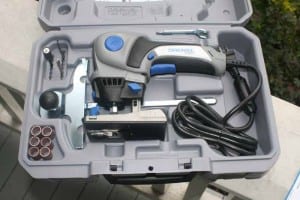
The tool features a nice rubberized grip in all areas you’d want: the top and bottom of the handle, and along and down the front part of the tool. Used in it’s default L-shaped position, this tool is a breeze to navigate and control. The company even put a slice of rubber along a path such that your index finger can rest against the tool if desired. In this way they allow you to decide whether you get more precision from resting your first two, or second and third fingers on the trigger. It was nice to see that, on this flexible tool, even the grip you choose has options.

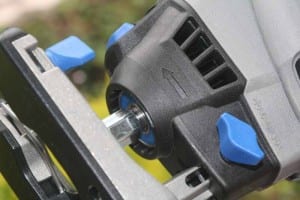
The base plate of the Trio can be adjusted up or down and has a full 1-1/4 throw, so you can go between shallow cutting or routing, and deep plunging or sanding. To adjust, you simply loosen the blue depth adjustment screw located on the left side of the tool (by hand) and move the plate as needed. You do need to be careful not to loosen it too much as Dremel didn’t secure the receiving nut in the tool, so it can fall out if you remove the screw completely.
On the base plate itself is another blue “wingnut”-style screw that you can use to lock down the included straight edge/circle guide. We liked the way the guide worked, having two distinct uses depending upon how it was attached. For making rip or straight cuts, you simply attache it with the knob-side down, thus placing the edge guide down against the wood you are cutting. Flip it over and you can use the included pin to stick into a center-hole and make perfect circular cuts from 4″ to 13″ in diameter. Not bad for a versatile rotary tool.
Accessories
You change and use accessories just like with any Dremel rotary tool and we won’t go into that here in detail. You can check our other Dremel Rotary Tool reviews for that. Suffice it to say, they go on and off without a hitch, and the thicker 3/16″ collet and associated accessories do lend a bit more confidence when you are pushing this tool to its limits. It makes for a beefier experience overall.
The retail kit we received included the Dremel Trio tool, molded case and several basic accessories, including:
- TR563 Trio Hardwood/Sheet Metal Carbide Bit
This is a high-speed cutter ideal for cutting soft wood, hardwood, plywood/composites, laminate; sheet metal, engineered flooring, drywall, acoustic tile, plastics, fiberglass, vinyl siding and aluminum. The solid carbide bit provides 5X more life than the standard multipurpose bit in wood. - TR407 Trio Sanding Drum Mandrel
The Sanding Drum Mandrel holds 1/2″ sanding band accessories. It shapes wood and sands inside of curves. - 2 x TR408 Trio Sanding Band – 60 grit
- 2 x TR432 Trio Sanding Band – 120 grit
- 2 x TR445 Trio Sanding Band – 240 grit
- TR654 1/4″ Straight Bit
This is for routing, inlaying and mortising in wood and other soft materials. The bit is made of high-speed steel.
Wrench Screwdriver for collet adjustment and accessory use - TR800 Straight Edge/Circle Guide
For cutting along pieces of wood. Reversible for use as a circle-cutting guide for holes 4″ – 13″ in diameter.
You can always use more accessories. Besides our above comments about the new collet size, the accessories looked and worked very well. It’s a good starter set that will have you up and running with most tasks and they are certainly durable. The built-in accessory storage on the blow mold case seemed adequate for basic use and the inclusion of the TR800 guide really opened up the Trio to a lot of advanced uses not common with a typical rotary tool.
Testing and Use
There is so much the Dremel Trio 6800 can do, we simply wanted to play around with it a while and get a feel for the tool, how well it cut, and how comfortable it was to use. First off, the tool is, as you’d expect with a Dremel rotary tool, extremely loud during use. While it only clocked in at 87 dB SPL on its own, plop it into a piece of wood, and we measured over 107dB SPL from 36-inches away! Expect that sound output to increase indoors and be sure to wear hearing protection – as we recommend with all power tools. The Dremel Trio is supposed to be able to fire up to 20,000 RPMs, and our measurements confirmed that. In fact it went to 20,873 RPMs. That’s a lot of cutting speed, and with the larger bits it was no surprise that the Trio sliced through most of our projects like butter.
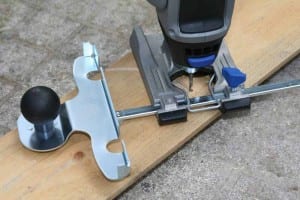
About the only negative was the absence of any distance markings on the guide – something that could make it easier to set widths and radius’ for cuts. As for the actual use, we couldn’t really ask for much more.
After this, we took the Dremel Trio 6800 and ripped a few pieces off of our template wood scraps to test the use of the TR800 as an edge guide. This was accomplished by flipping it over and inserting it with the knob facing downward. For straight cuts like this, you want to keep the edge guide on the right of the tool, so the rotation of the bit aids in holding the Trio’s guide tight against the wood. In theory, you’d also want to do your circular cuts counter-clockwise, but we found both directions to be just as easy and successful with the fulcrum in place. Cuts were very easy with this tool. After making our test cuts, we substituted the sanding bit and smoothed out all our edges.
Conclusion
Look, Christmas is coming. I think the Dremel Trio is one of those tools that makes for a very unique type of tool. It’s flexible, but still specialized. You’re not going to cut 2x4s with it, but having it is a nice step up from a simpler rotary tool. We liked how it could handle sanding duties as well as basic routing and cutting tasks. For the hobbyist, it’s a neat tool. For anyone who’s a professional woodworker – well it’s just not made for that market. For performance we gave the Dremel Trio a 7/10, mostly because of the increased flexibility and larger 3/16″ collet. You’re not likely to break a bit on this tool before you wear it out. For Value, it got an easy 8/10 since it’s only $99 and you will likely find it on sale below that this time of year. It’s a fun tool for that tinkerer you know and love.

